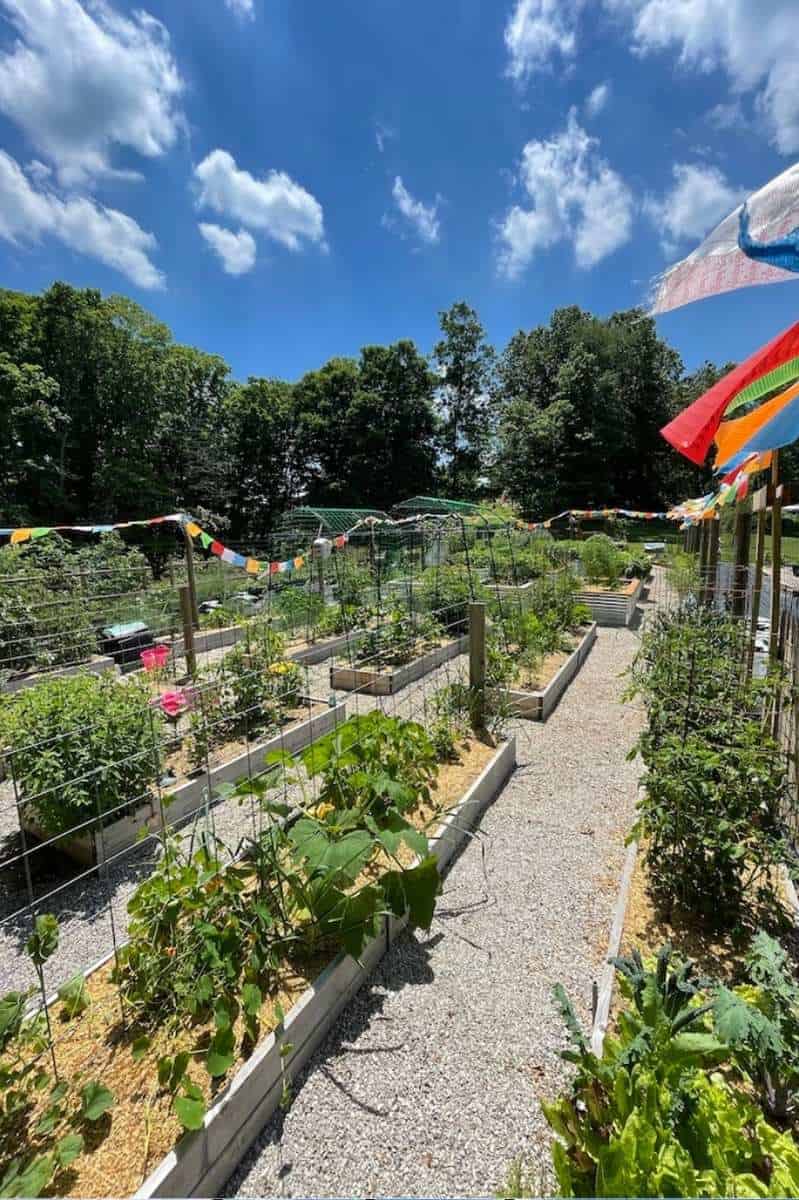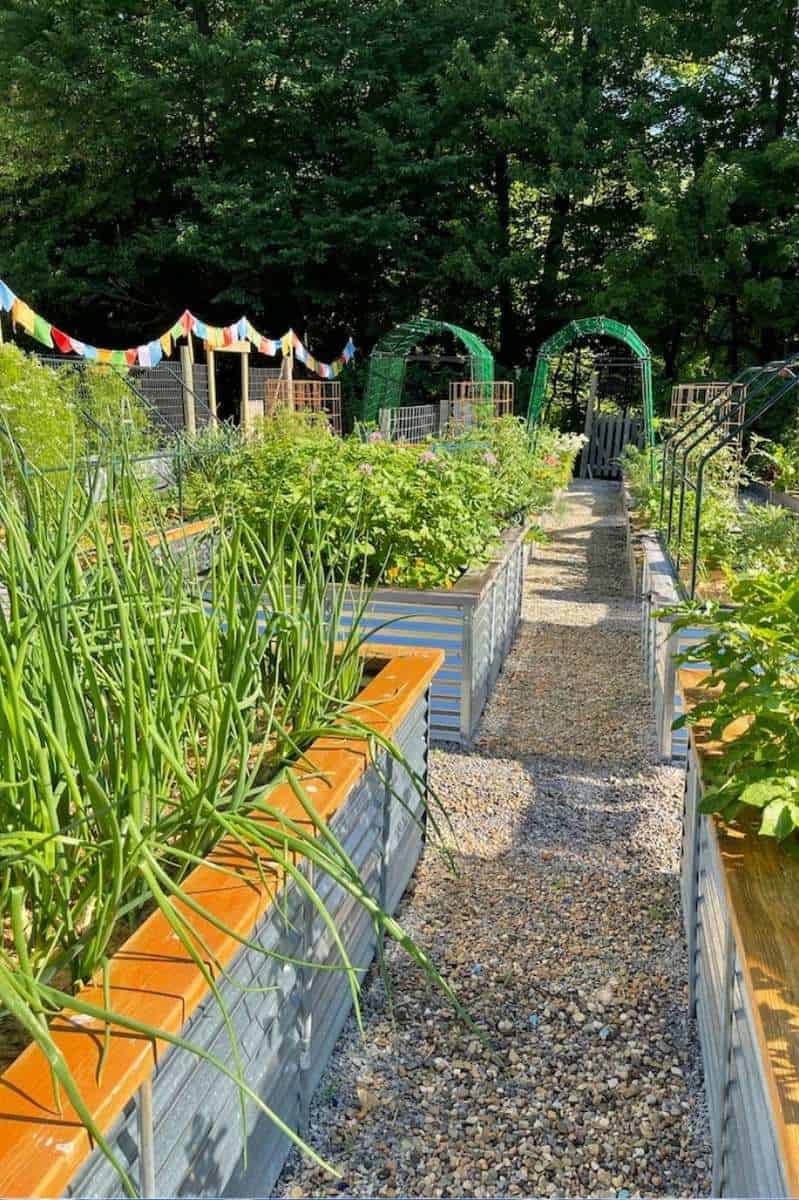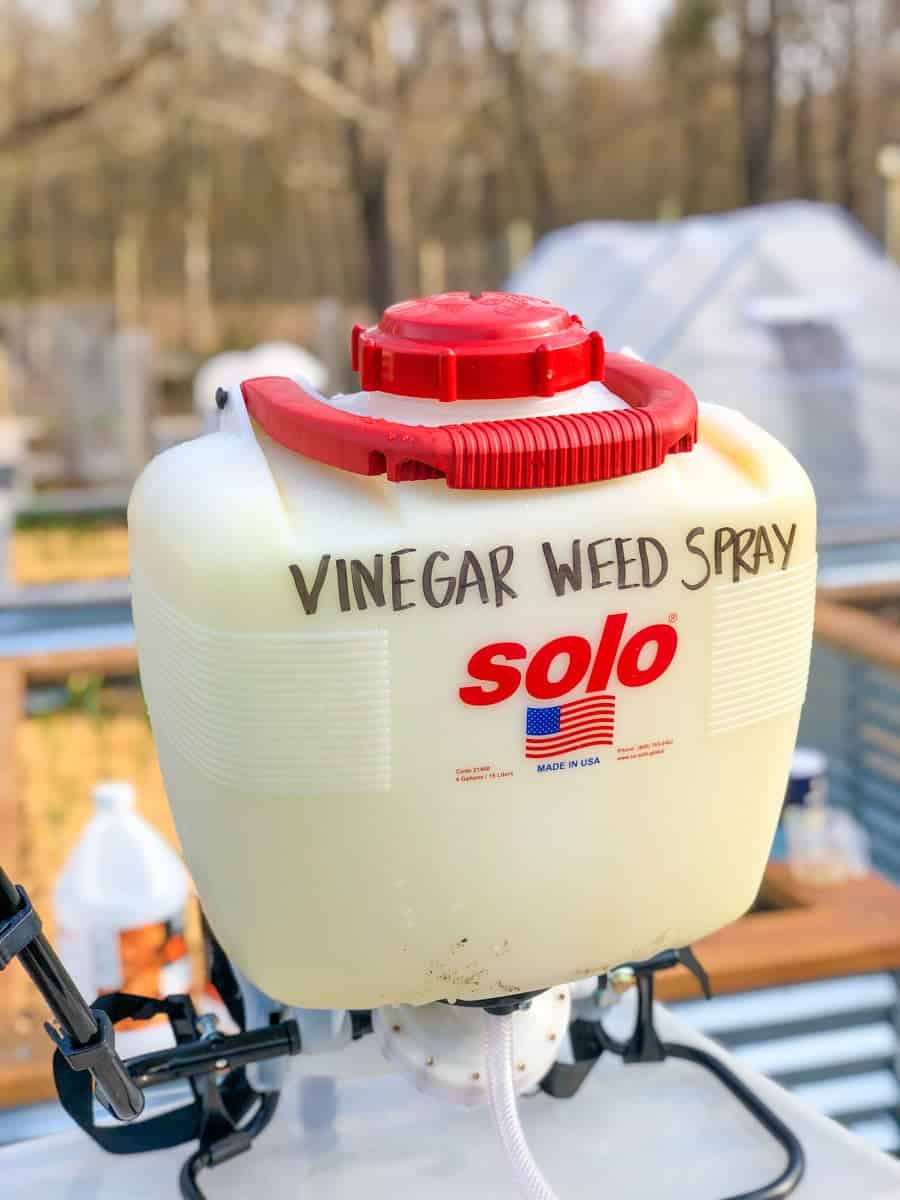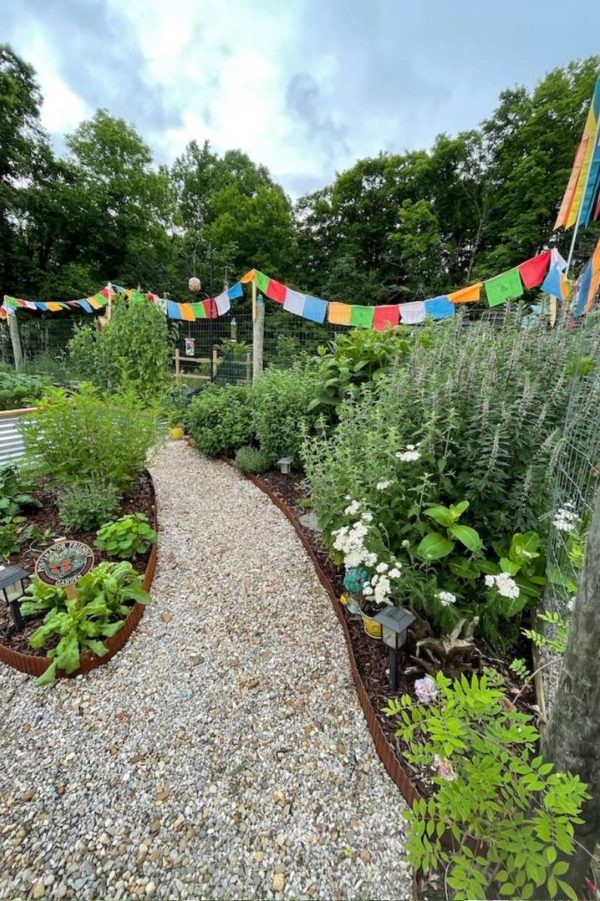There are a number of different philosophies you can take about weeds in your garden. On one end of the spectrum, we have folks who like to let nature take over and happily grow their tomatoes in between patches of crabgrass and dandelion. On the other end of the spectrum are gardeners with perfectly manicured plots where weeds don’t stand a chance! And of course, there are those of us in between—we don’t want weeds taking over and crowding out our plants, but we’re not going to fret if a dandelion or two shows its sunny face in our aisles.
No matter where you fall on the weed tolerance spectrum, we have some tips here that can help you keep your garden aisles tidy and weed-free. These are the same methods we use in the Growfully Gardens, and these tips will help reduce your weeding time dramatically!

Table of Contents
First up: what is a “weed” anyway?
Before we dive in, let’s talk about what a weed really is. The definition is simple. A weed is any plant that is growing where you don’t want it!
A dandelion is a perfect example. We love dandelions in our yard and fields! They are great for dandelion mead, cake, salads, jelly, and tinctures, and pollinators love ’em. Plus those sunny yellow flowers bring me so much joy each spring!
On the vast majority of our property, dandelions are well-loved and respected, but dandelions become “weeds” when they show up in our garden aisles or driveway—because I don’t want them there for various reasons.
Growfully Protip
Lots of plants that are typically considered “weeds” are beloved by bees and butterflies, have medicinal properties, and/or are edible, so before you go on a killing rampage, make sure to assess their benefits first!
Heck, even a tomato plant can be considered a weed if it’s growing where you want to grow green beans! It’s all a matter of perspective, and what you consider a “weed” will differ from what the gardener next to you does.
In this post, we’re talking about how to get rid of “weeds” (whatever you decide that means to you!) in our gravel paths and walkways in our garden (and we use the same methods on our gravel driveway)—I don’t recommend all of these methods for controlling weeds in a lawn or for nixing weeds from your garden beds.

How do I get rid of weeds in gravel forever?
While I sometimes wish there was a weed management method that meant you’d never have to deal with plants where you don’t want them again, it’s not going to happen. Some weed seeds can survive in the ground for literal decades, plus you have to contend with the weed seeds that are brought into your space by the wind, birds, and other animals. They will never go away entirely!
However, we have found that some methods work better than others for organic weed control so you don’t spend hours every weekend pulling weeds, and those are the ones we are talking about here.

How do you keep weeds from growing in gravel?
Prevention is the absolute most important part of keeping weeds out of gravel. A good base foundation of weed control under your gravel will go a long way to keeping weeds at bay. We recommend putting landscape fabric down below any gravel area you want to keep weed-free.
How to get rid of weeds: prevention and removal
Our weed control strategy has several layers—some are meant to prevent weeds from taking root in the first place, and some tackle the weeds themselves.

Landscape fabric
When we first started our garden, we laid landscape fabric down between our raised beds to act as a barrier for weed germination and then topped it with gravel. We don’t love having a petroleum-based product in our aisles, but it is a bit of a necessary evil for us, and our garden just wouldn’t be sustainable for us to maintain without it.
If you really want to avoid using plastic-based landscape fabric, you can also lay down a thick layer of cardboard in your garden aisles, and top that with gravel or a thick layer of mulch. It won’t last nearly as long as the fabric, but will at least smother some of the weeds before they have a chance to germinate. Hopefully, you can create a thick enough layer of organic matter that the weed seeds in the soil will never get enough light to germinate.
Corn gluten meal
Corn gluten meal is an all-natural byproduct of corn processing, and it also prevents seeds (of all kinds) from setting roots once they have germinated. The key with corn gluten meal is that the effects are cumulative—the more growing seasons you use it, the better your results will be. We apply corn gluten meal to our gravel aisles a couple of times each growing season.
Corn gluten meal needs to be applied during specific weather conditions and times in the growing season, so make sure to read the label on your bag closely before application.
Growfully Protip
It is possible to use corn gluten in your vegetable garden beds, where it can also work as a fertilizer that will boost the nitrogen in your soil. However, if you are direct sowing seeds in your garden, we don’t recommend using corn gluten in your beds, as it will keep both the weeds and your vegetables from setting root.

Homemade weed killer
Once weeds have poked their heads up, we spray them with our homemade weed killer. If we can get them out before they have a chance to go to seed, we’ll deal with fewer weeds down the line. This weed killer works best on broadleaf weeds.
Unlike synthetic herbicides like Roundup that use chemicals like glyphosate, our natural weed killer’s active ingredient is horticultural vinegar combine with table salt and orange oil.

So where Roundup targets the entire weed down to its roots, our vinegar weed killer targets leaves and stems but not roots. Because of this, we reapply this spray regularly. During the growing season, we spray individual weeds weekly, and do a larger spray of our garden aisles and driveway every 4-6 weeks. This spray also works great on sidewalks cracks. You do need to apply it on a hot, sunny day for best results.
Growfully Protip
Even though our weed killer isn’t a synthetic herbicide, it should still be applied with care due to the strength of the horticultural vinegar. Avoid spraying it on a windy day, wear personal protective gear, and keep it away from children and pets. Also avoid storing the spray in a regular plastic sprayer or spray bottle, as the acidity of the vinegar will degrade the plastic over time.
Note that this weed killer is non-selective, so it will damage or kill any plant it hits. It will also make your soil more acidic. For these reasons, we don’t recommend using this homemade weed killer inside your garden beds.
Hand pulling
There’s no way around it—sometimes hand pulling is the best way to get up those pesky weeds. It’s not the most efficient method of weed control when you are working with a large space, but it can be quite meditative and enjoyable if you come at it with the right mindset. Hand-pulling is the best method for removing perennial weeds like dandelion and thistle.
When hand-pulling weeds, be sure to pull from the base of the plant so that you get all (or at least most of) the roots. Some plants, like dandelions, can regrow from just the roots, so you want to make sure to get the whole thing up.

Flame weeding
A flame weeder is basically a small flame torch that you connect to a portable propane tank. You use the torch to burn the leaves and stems of a weed. Flame weeding works incredibly well, and we use it often on our driveway and gravel patio. We do not use flame weeding where we have landscape fabric under our gravel, because the heat can easily burn through the fabric—and you’ll be left with a hole where weeds can grow through. Flame weeding works the best on annual leaves and broadleaf weeds.
Raking to get rid of weeds
Gravel aisles have the distinct benefit of being able to be to raked without bringing up more weed seeds to the surface for germination. We regularly rake our aisles to pull up any sprouts or seedlings and rake away any weeds that have been killed by using weed spray or flame weeding.








If I were to improve my home’s curb appeal, I would make sure to have its weeds remove first. I also agree with you that it would be best to look around the gravel too because weeds may grow from there. Thank you for sharing here as well that laying down a thick layer of cardboard will help improve the aisle.